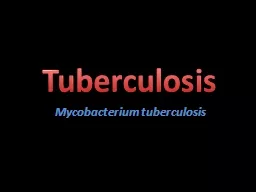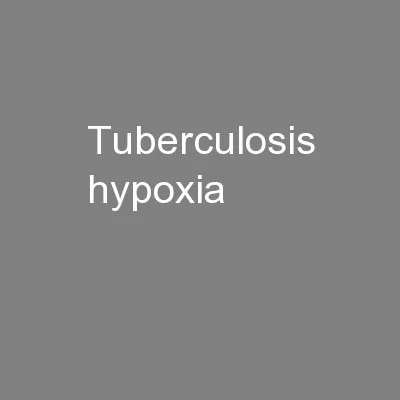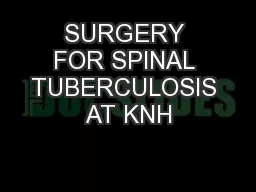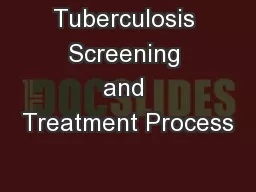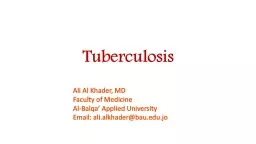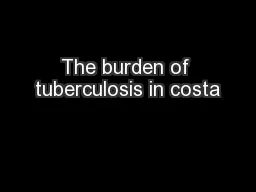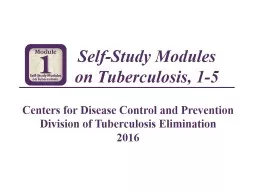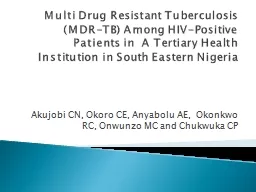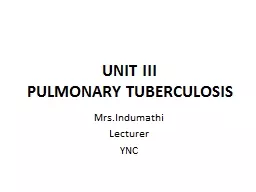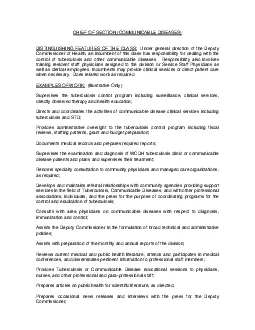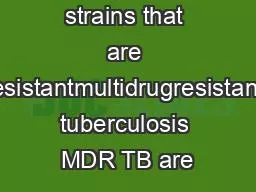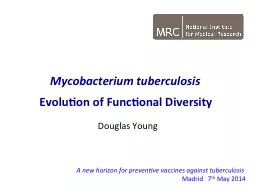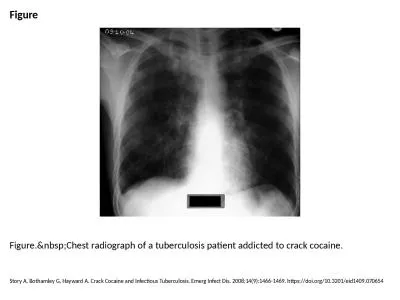PDF-1 Curriculum MD Chest Diseases Tuberculosis
Author : amber | Published Date : 2022-08-22
PG Curriculum MD Chest and Tuberculosis Index 1 Goals 2 Objectives 3 Syllabus 4 Teaching Program 5 Posting 6 Thesis 7 Assessment 8 Job Responsibilities 9 Suggested
Presentation Embed Code
Download Presentation
Download Presentation The PPT/PDF document "1 Curriculum MD Chest Diseases Tubercul..." is the property of its rightful owner. Permission is granted to download and print the materials on this website for personal, non-commercial use only, and to display it on your personal computer provided you do not modify the materials and that you retain all copyright notices contained in the materials. By downloading content from our website, you accept the terms of this agreement.
1 Curriculum MD Chest Diseases Tuberculosis: Transcript
PG Curriculum MD Chest and Tuberculosis Index 1 Goals 2 Objectives 3 Syllabus 4 Teaching Program 5 Posting 6 Thesis 7 Assessment 8 Job Responsibilities 9 Suggested Books 10 Model Test. When someone who is sick with TB coughs speaks laughs sings or sneezes people nearby may breathe TB bacteria into their lungs TB usually attacks the lungs but can also attack other parts of the body such as the brain spine or kidneys There are two t Mycobacterium tuberculosis. What is . it?. . Tuberculosis is a slow growing infection that is caused by . mycobacterium tuberculosis. , multiplying once every 15-24 hours. M. ost commonly found in the lungs (pulmonary TB), but may also affect bone tissue, the central nervous system and other organs. Max Planck Institute for Infection Biology. MPIB-0202-10VSBL. Study Overview. Objective. 2. To identify biochemicals that are altered in . Mycobacterium tuberculosis . cultured under hypoxic conditions in a snow globe model. A secondary objective is to identify biochemicals that are differentially released into the culture media and/or consumed from the media. . Dr. Mohamed Areeb . Chaudry:Medical. Officer. Dr. . Akil. . Fazal:Consultant. . Orthopaedic. Surgeon KNH. I. ntroduction:. Definition. Disease Burden. Treatment Modalities. Materials and Methods. Why do we test?. 1. We want to prevent an outbreak of Tuberculosis in our campus community. 2. We want to find those that are affected and get them treated so you are able to continue to participate in your schooling. . ’ . Q’aqa. ’. Tuberculosis is a communicable chronic granulomatous disease caused by . Mycobacterium tuberculosis. . It usually involves the lungs but may affect any organ or tissue in the body. Typically, the centers of tubercular granulomas undergo . rica. Kimmy Hogue. Nurs. 445: Summer 2014. San Jose, Costa . rica. costa . rica. 4.805 million (2012). Spanish is the official language. GDP per capita 9,386.30 USD (2012). Ranked 63. rd. in 2012. United States of America: GDP 51,748.56 USD (2012). Centers for Disease Control and Prevention. Division of Tuberculosis Elimination. 2016. . . CDC Self-Study Modules on Tuberculosis, 1-5 . Module 1: Transmission and Pathogenesis of TB. Module 2: Epidemiology of TB. Akujobi. CN, . Okoro. CE, . Anyabolu. AE, . Okonkwo. RC, . Onwunzo. MC and . Chukwuka. CP. Tuberculosis (TB) is the most common opportunistic infection in Human . Immuno. d. eficiency . Virus (HIV. Mrs.Indumathi. Lecturer . YNC. OBJECTIVE. By the end of the session the student will be able to:. define tuberculosis. explain the epidemiological triad of tuberculosis. identify the mode of transmission and incubation period. DISTINGUISHING FEATURES OF THE CLASS Under general direction of the Deputy Commissioner of Health an incumbent of this class has responsibility for dealing with the control of tuberculosis and othe ries 14 61 contributed data on 17690 isolates whichThese drugs are more costly toxic and less effective thanfirst-line drugs used for routine treatment of TB with other diseases resistance to TB drugs Madrid 7. th. May 2014. Mycobacterium tuberculosis. Evolution of Functional Diversity. 844 badgers . caught . and . sampled. disease detection by serology . 262 captured . more than . once. . were test . Story A, Bothamley G, Hayward A. Crack Cocaine and Infectious Tuberculosis. Emerg Infect Dis. 2008;14(9):1466-1469. https://doi.org/10.3201/eid1409.070654.
Download Document
Here is the link to download the presentation.
"1 Curriculum MD Chest Diseases Tuberculosis"The content belongs to its owner. You may download and print it for personal use, without modification, and keep all copyright notices. By downloading, you agree to these terms.
Related Documents


